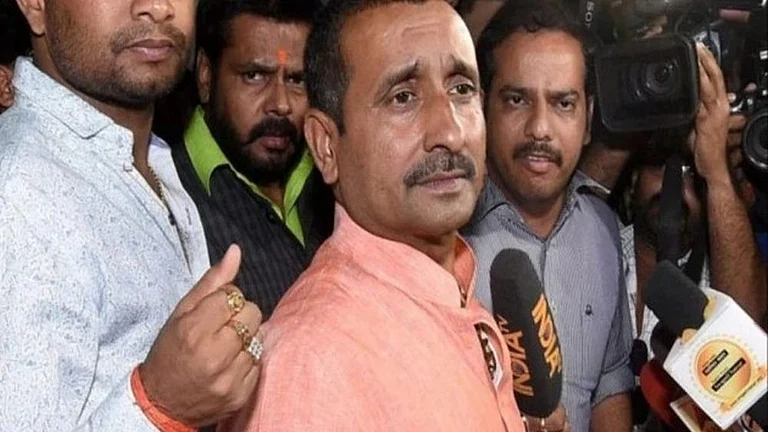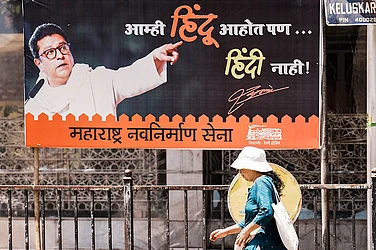A day with Sampat Pal, the 53-year-old leader of the Gulabi Gang, is like being in the middle of a tornado. After her car picks us up at Atarra station at about 8 am, the day is one continuous whirlwind of visits to police stations, listening to woebegone villagers, attending property disputes, interacting with women seeking empowerment and dealing with irate-but-circumspect officials.
In Pista, a crew of two dozen pink saris turns up unannounced at the sarpanch’s house in connection with a local dispute. All eyes follow Sampat with respect—she is a legend that lives and walks their streets. On the way back, Sampat offers a ride to Saira, a thirtysomething mother of two. Her husband left her for another woman. When she came to Gulabi Gang, Sampat taught her how to deal with litigation rather than beg to be taken back. “When the judge offered to pass an order that would return the dowry, wedding charges, maintenance and everything else, I asked him—’Can you return my honour?’ He just dictated the maintenance order in my favour,” says Saira.
At the police station, Sampat is greeted with smiles, friendly gestures and cooperation. It has taken her 30 years to get here, she says. The journey began with her slapping a man who abused his wife. Soon women started coming to her for advice on marital problems, then for larger issues of safety and security. When she was 20, a group of Kol (indigenous tribe) women approached her because non-tribal men were sexually assaulting them. Sampat managed to convince the district administration that the solution was community land rights for Kol housing (and this was two decades before the Forest Rights Act). The convincing became easy because Sampat organised these women (around 200) in protest in front of the district magistrate’s office. It soon became her modus operandi—peaceful protests outside police stations and government offices. Initially, the police wielded batons. But Sampat and her band of merry women learned to give it back. “Once, a policeman tried to beat us up, we tied him and gave him a good beating. There are two pending cases of assault against me,” she says.
Sampat’s local popularity soared when she floated a rally of 200 dogs, declaring that the canine species was more loyal than policemen. Another time, she made a district magistrate walk, in a sea of pink saris, a few kilometres through Atarra town to convince him that the road needed repair. Work started the next day.
When deciding on a uniform, Sampat decided pink was the only colour that would not align with any political party. The ‘gang’ suffix, she says, was the work of a creative deskhand of a newspaper. When she contested the 2012 state assembly elections, she left the gang out of it. “I will not politicise the organisation. I contested individually,” she says.
The authorities cracked down on her, accusing her of being a Naxalite. During the probe that followed, Sampat, who did not know what Naxalite meant, did not deny that she was a left-wing extremist. “The next question was: ‘Do you have an AK-47?’ I said yes and began to pull out my society registration forms. The official laughed, made his notes and gave me a clean chit,” she says.
Educated till Class 8, Sampat taught herself English after her first trip to France—to speak at an international event that recognised her contribution.
Ushinor Majumdar in Badausa, Atarra and Pista, UP


























